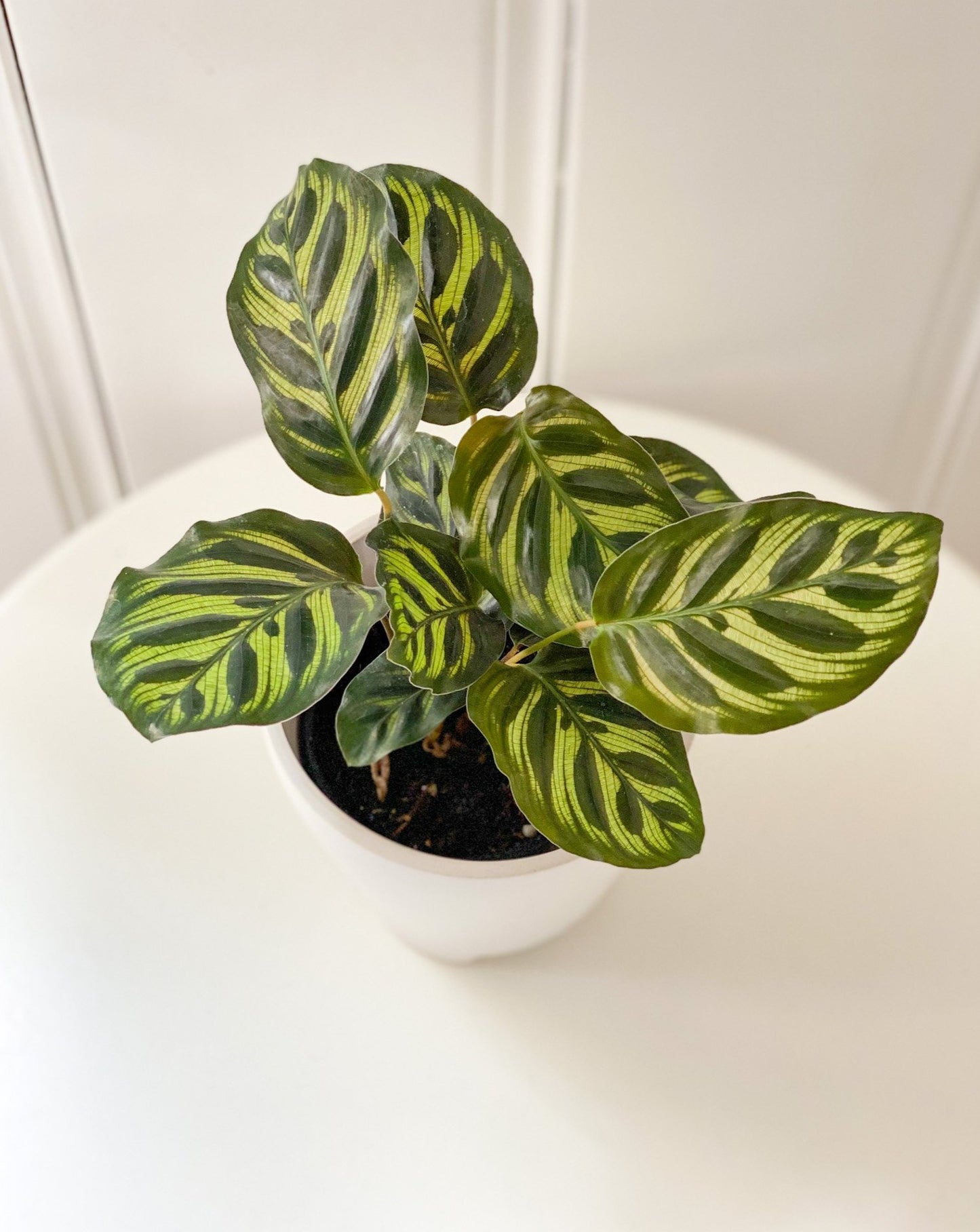FIORI & FERN
Peacock Calathea
Peacock Calathea
Regular price
$18.00
Regular price
Sale price
$18.00
Unit price
per
Shipping calculated at checkout.
Couldn't load pickup availability
LIGHT
Your Calathea Peacock will do best in low to medium light area. Never allow this plant to stand in the direct sunlight—the leaves will get sunburned!
WATER
For best results, maintain a regular watering schedule and keep your Calathea Peacock moist, but not wet or saturated. This is not a drought tolerant indoor plant, but it is relatively forgiving if you forget to water it from time to time. Extended periods of dryness can result in brown leaf tips or edges.
HUMIDITY
Like many tropical indoor plants, your Calathea Peacock prefers a spot with ample humidity. If leaf edges begin to curl or brown up, mist them with lukewarm water on a regular basis, or use a pebble tray. This Calathea will thrive if given frequent, lukewarm showers either in the actual shower or use the spray attachment near your sink. Your bathroom or kitchen are perfect spots for this plant because these areas tend to be more humid.
TEMPERATURE
Your Calathea Peacock enjoys the warmth, preferably between 65-85 degrees, so maintain indoor temperatures above 60 degrees. Avoid cold drafts and sudden temperature changes.
FOOD
For best results, use a general houseplant fertilizer with iron every four weeks during the spring and summer. No fertilizer is necessary for the winter when plant growth naturally slows.
TOXICITY
Calatheas are non-toxic plants and are safe for humans, cats, and dogs.
ADDITIONAL CARE
If you notice a tip or edge burn often with a yellowish hue at the edge, especially on older leaves, it could be due to your tap water. To solve this, allow your tap water to stand overnight before watering so the chlorine and fluoride can evaporate. Remove any yellow leaves to keep your plant strong and growing. If only a portion of the leaf is brown or yellow go ahead and carefully trim off that portion of the leaf with a sharp pair of scissors or pruning shears. Do not use any shine products on the leaves, instead, clean leaves occasionally with a damp cloth.

Preferred delivery or pick up date:

